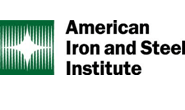Steel Products

Leibowitz on Tariffs: The Longer They Last, the More They Distort
Written by Lewis Leibowitz
November 24, 2019
Trade attorney and Steel Market Update contributor Lewis Leibowitz offers the following update on events in Washington:
As the Section 232 tariffs continue, their market effects continue to pile up. The tariffs cause effects on investment and employment, both for steel producers and their customers. Tariffs reduce imports of steel, for example, but they increase imports of products made from steel that are not subject to the tariffs.
Anne Krueger, former chief economist of the World Bank, posted a column this week that cites one reason for this: the ability of companies to get exclusions from the tariffs and quotas for specific steel products. Dr. Krueger’s article is available here.
Dr. Krueger’s complaint is that the government chooses the recipients of exclusions. Evidence is inconclusive about how the government chooses which exclusions to approve. But there is mounting evidence that deserving requests (products not available from domestic producers) don’t always get granted. A large number of exclusion requests get no action at all—they sit for months with no decision one way or the other. The Mercatus Center at George Mason University reports that, as of July 30, 2019, 62,797 steel product exclusion requests were submitted, of which 30,545 (49 percent) were granted, 13,261 (21 percent) were rejected and 18,991 (30 percent) were not decided.
Giving a product exclusion could create a competitive advantage to the recipient. However, the existence of the Section 232 tariffs in the first place is a greater distortion. It could be argued that product exclusions reduce the distortion the tariffs caused to begin with. Perhaps the best way to reduce market distortions is to dispense with the tariffs altogether; Dr. Krueger would no doubt agree with that.
Steel-using manufacturers have been busy, as well. In the view of steel users, represented by the Coalition of American Metal Manufacturers and Users (CAMMU), the longer the tariffs last, the more the market distortions pile up. After a while, permanent decisions will be made that will shrink the steel market in this country. (ARTICLE CONTINUES BELOW)
{loadposition reserved_message}
To limit the damage, CAMMU recently wrote a letter to Senators Chuck Grassley and Ron Wyden, the chairman and ranking member of the Senate Finance Committee, requesting legislation to “sunset” the steel tariffs. The full letter is available here. The letter argues that the steel tariffs should be “sunset”—terminated as of a specific date. CAMMU points out that the Commerce Department report on Section 232 set a benchmark of 80 percent capacity utilization as necessary for industry viability. This goal was achieved in September 2018. But the letter points out that “the tariffs are still in place, have not been adjusted, and no end date has been announced.”
The progress of legislation to reform Section 232 has also been frustratingly slow. The sharp divide in the nation over many important issues has created deadlock. The Finance Committee has a difficult job—because the president is likely to veto any bill that limits his discretion to impose tariffs, Senators Grassley and Wyden must craft a bill that will get at least 67 votes in the Senate and 290 votes in the House. So far, they have not been able to meet that goal. CAMMU wants reform to address the issue of sunsetting the tariffs.
Congress traditionally shies away from thorny issues in a presidential election year, and the next such year is about to begin. A recent flurry of activity on the USMCA (U.S.-Mexico-Canada Agreement) put Section 232 reform off for a bit, and the impeachment saga will continue into next year for sure. All these things do not bode well for quick action on the issue of tariffs. China is an entirely different issue—on that one, Congress has shown no interest in reform. All in all, it’s difficult to be optimistic that congressional reform of Section 232 will get done in 2020.
In the meantime, the president has not mentioned any set of circumstances that would cause him to set a termination date for the Section 232 tariffs. The effects on consuming industries that CAMMU and Dr. Krueger speak about also continue, along with harm to other sectors that have lost export sales because of retaliatory tariffs in response to the Section 232 tariffs. The choices steel users (who vastly outnumber steel producers) must make about new investments and new hiring will be impacted by the tariffs and retaliatory-tariffs. It’s about time we talked seriously about how long these tariffs should last.
Lewis Leibowitz
The Law Office of Lewis E. Leibowitz
1400 16th Street, N.W.
Suite 350
Washington, D.C. 20036
Phone: (202) 776-1142
Fax: (202) 861-2924
Cell: (202) 250-1551

Lewis Leibowitz
Read more from Lewis LeibowitzLatest in Steel Products

S232 lifts EU HR price over US, Asian HR still well behind
Domestic hot-rolled coil prices were flat this week after dropping for four straight weeks. Most offshore markets bucked the trend and gained ground.

SMU Steel Demand Index dips into contraction
SMU’s Steel Demand Index has moved into contraction, according to late April indicators. The slowdown comes in response to growing tariff uncertainty after the index reached a four-year high in late February.

Nucor selects Fives Group for new galv line at CSI
Nucor Corp. has tapped Fives Group as its partner in designing and manufacturing the new continuous galvanizing line being added at its California Steel Industries (CSI) joint venture in Fontana, Calif.

AISI: Raw steel production levels off near six-month high
The volume of raw steel produced by US mills remained relatively flat last week, maintaining the rebound seen one week prior, according to the American Iron and Steel Institute (AISI). Previously at the second-highest rate of the year, production continues to hold at one the strongest levels recorded over the last six months.

Nucor keeps HRC price unchanged
Nucor has kept its weekly hot-rolled (HR) coil price flat this week, after a marginal cut the previous week.
